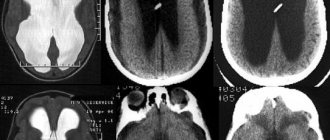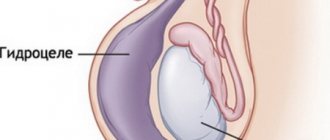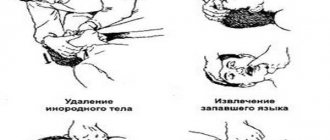General information
Stridor is called hissing or whistling, that is, noisy breathing, which is caused by turbulent air flows in the trachea or larynx, that is, passing through the respiratory tract with narrowed areas or, in more rare cases, in the presence of foreign objects, tumors, outgrowths that can be caused by infectious agents.
It is more often recorded in young children due to laryngomalacia - delayed formation of laryngeal cartilage. Stridor is a symptom of respiratory obstruction. Pathological conditions manifested by stridor are usually life-threatening and require immediate medical attention, as there is a possibility of developing complete obstruction, respiratory failure and pulmonary edema .
Urgently see an ENT specialist: alarming symptoms
It is important to carry out treatment of childhood ENT diseases in a timely manner. Children are characterized by a rapid increase in symptoms and rapid progression of complications. Therefore, if you notice painful symptoms in your child, do not delay visiting a doctor. Which ones are the most dangerous?
- a sharp increase in temperature and pain in the throat, ear, nose;
- noisy breathing, hearing loss;
- constant nasal congestion and thin, watery snot;
- viscous yellow-green nasal discharge;
- ear congestion, lumbago, ringing in the ear;
- inflammation behind the ear, purulent discharge from the ears;
- ulceration of the oral cavity;
- swelling and severe redness of the oropharynx;
- in newborns - moodiness, digestive disorders, poor sleep, tearing of the ears.
Pathogenesis
The pathogenesis of stridor is usually based on significant obstruction of the larynx or trachea, caused by edematous-inflammatory processes, the entry of foreign bodies into the lumen (usually food or bolus), the development of a tumor or other pathological condition. This changes the difference between intrathoracic and atmospheric flow and creates turbulent air currents.
Structure of the oropharynx
Congenital stridor in newborns caused by laryngomalacia occurs when the epiglottis folds into a tube and the development of laryngeal cartilages is delayed, their excessive softness and pliability. The position of the aryepiglottic ligaments is close to each other with the formation of some loose sails, which creates noise - most often during inhalation due to vibrations.
Stridorous breathing is characterized by high resistance to normal breathing, loss of uniform flow and flow of air (the so-called laminarity). As a result, characteristic sounds and vibrations arise, the mucous membranes dry out at the site of narrowing of the airway lumen and sputum crusts form.
Treatment of ENT diseases
In the vast majority of cases, ENT diseases in children are bacterial or infectious in nature.
Medicines
They use antibiotics, antiviral, decongestant, anti-inflammatory, anesthetic drugs of local (drops, ointments) or general (inside) action.
At the same time, immunostrengthening drugs and vitamins are prescribed.
Inhalations and physiotherapy
Methods of introducing drugs into the body through inhalation or using physical influence (current, laser, magnet, radio waves, or a combination thereof). Effectively stimulate the body's defenses to fight the disease.
Surgical intervention
When conservative methods are ineffective, surgery is prescribed. Tonsils, adenoids, and juvenile angiofibroma are removed. You should get rid of these formations on the advice of a doctor. Delay can lead to the growth of structures, and then getting rid of them 100% is already problematic - there will be relapses.
Treat children's ENT diseases promptly with our specialists. Remember that delaying a visit to the doctor is fraught with complications on the child’s brain and the disease becoming chronic. But chronic diseases of the ear, nose and throat are problematic to treat. Noticed the symptoms? Make an appointment with an otolaryngologist at Best Clinic or call a specialist at home. Our doctors will come to the rescue any day of the week!
Classification
Stridor may differ in pitch, volume, and in what phase of breathing it occurs. Inspiratory - occurs on inspiration, expiratory - on exhalation, and can also be biphasic.
A separate type is the extrathoracic type of stridor in children with a weak chest frame (not able to protect against collapse) and too pliable airways, which narrow due to the difference between atmospheric pressure and low air pressure in the airways immediately behind the narrowing.
Causes
In 87% of cases, congenital stridor is observed in children under one year of age, caused by congenital anomalies in the development of the respiratory tract. The acquired pathological condition of stridor is usually the result of processes such as:
- ingestion of foreign objects through inhalation, for example, food bolus or small parts of toys during children's games;
- burns or smoke inhalation;
- tumor formation in the larynx, esophagus or trachea, more often with the development of squamous cell carcinoma ;
- congenital heart defects or mediastinal tumors;
- infections leading to epiglotitis , paratonsilial and retropharyngeal abscess , diphtheria, tuberculosis, syphilitic, influenza croup or papillomatosis , post-traumatic encephalopathy, arachnoiditis , bulbar or pseudobulbar syndrome ;
- swelling of the respiratory tract, which is not of an infectious nature, but of a toxic or allergic nature;
- prolonged intubation and the development of subglottic stenosis, in more rare cases - subglottic hemangioma ;
- the presence of vascular rings compressing the trachea;
- development of thyroiditis or tumors of the thyroid and thymus glands;
- tetany;
- paralysis of the vocal folds or larynx;
- post-intubation period or paradoxical movements during inspiration, causing laryngospasm .
Symptoms
There are many comparisons and descriptions of congenital stridor - reminiscent of the cooing of pigeons, the purring of cats, the clucking of a chicken, etc. However, in most cases the sound is transient, whistling and ringing. Moreover, the child’s voice is the same ringing, clear, general health is normal, breathing is practically not difficult (in some cases, inhalation may be difficult), the sucking process is normal.
Other symptoms associated with stridor include:
- ringing cough with a metallic tint;
- salivation;
- hoarse voice;
- the presence of such signs of respiratory failure as shortness of breath , accompanied by retraction of the intercostal spaces and the participation of auxiliary muscles;
- anxiety;
- rapid breathing and heart rate;
- depression and anxiety;
- increasing obstruction can lead to cyanosis .
To reduce the sound intensity, it is enough to move the child to a warmer room or lay him on his stomach. Also, stridor in infants subsides during sleep, but increases if the child performs physical activity, screams, is nervous, or coughs. If there is normal growth and development of the cartilage of the larynx, then closer to the age of one year, stridor may spontaneously subside; otherwise, stridor in children may occur at rest, which requires immediate hospitalization.
Expiratory stridor breathing can intensify with the progression of edematous-inflammatory narrowing of the bronchi and an increase in expiratory force.
Respiratory tract lesions in a child
Manifestations of ARVI (rhinitis, pharyngitis, etc.), as well as chronic foci of infection (sinusitis, tonsillitis, adenoiditis), may have a direct connection with deeper processes in the bronchi and lungs. Pale nasal mucosa, hay runny nose or chronic allergic rhinitis (consultation with a pediatric allergist at the Markushka polyclinic) are typical for patients with respiratory allergies. Difficulty in nasal breathing is often a consequence of the growth of adenoid vegetations, less often - a curvature of the nasal septum. The child has a characteristic facial expression, his mouth is slightly open, there may be periorbital shadows, and subsequently deformation of the facial skull may be observed.
The degree of nasal breathing impairment can be determined by the child’s ability to breathe with his mouth closed, as well as (in older children) by the speed of the stream of air exhaled through one nostril, felt by the examiner’s hand.
Hoarseness, or hoarseness, can occur due to a variety of conditions.
Aphonia in children, child, causes
The most pronounced and severe form is aphonia . The main causes of aphonia are the following.
Acute infection of the mucous membrane of the larynx, acute viral laryngitis, “false” croup (viral stenosing laryngotracheitis), diphtheria croup. Vaccination against diphtheria for children - children's medical.
Chronic infections : chronic sinusitis and bronchitis, laryngeal tuberculosis.
Changes in the vocal cords of a different nature : caused by dry airways (with predominant breathing through the mouth); croup syndrome (due to severe air pollution, primarily irritating gases), non-inflammatory swelling of the mucous membrane of the respiratory tract (in diseases accompanied by hypoproteinemia, hypothyroidism, in which hypothyroid swelling of the vocal cords causes a hoarse, low “grunting” voice); tumors of the vocal cords (mainly papillomas, nodules); paralysis of the vocal cords, for example with damage to the recurrent nerve or functional disorders (phonasthenia).
Non-physiological relationships during the formation of sound lead to overstrain of the vocal cords, the voice seems to “intercept.” After a long conversation, hoarseness and fatigue appear.
The so-called hysterical aphonia is rarely observed in children and is easily recognized, since the child’s voice becomes silent, but clear and distinct sounds are heard when coughing. The causes of psychogenic aphonia should be sought in the life problems that are relevant to the child.
Stridor in a child, children
Stridor is a breathing noise that occurs when air flow passes through a narrowed section of the respiratory tract. Stridor always indicates a narrowing of the airways. It can be in the inspiratory phase (inspiratory stridor), in the expiratory phase (expiratory stridor), or in both phases of breathing ( mixed stridor ). In all cases, stridor indicates serious breathing difficulties and is a sign of dyspnea.
Acute obstruction of the upper respiratory tract in a child, children
Acute obstruction of the upper respiratory tract due to narrowing of the larynx and bronchi is the most common cause of acute respiratory failure in children. The following factors predispose it to its frequent occurrence: narrow airways, loose tissue of the subglottic space of the larynx, the tendency of children to laryngospasm, relative weakness of the respiratory muscles. In the subglottic space, with viral lesions, allergic conditions, and trauma, swelling quickly occurs and life-threatening stenosis progresses. Against the background of narrow airways in young children, edema of 1 mm leads to a narrowing of the lumen by up to 50%.
Atopic, exudative-catarrhal and lymphatic constitutional anomalies, polluted air (including passive smoking), iron deficiency conditions, and paratrophy also predispose to the development of upper respiratory tract obstruction syndrome. The main cause is viral infections, less often - bacterial.
Etiological factors cause catarrhal (viruses), edematous (allergies), edematous-infiltrative (viruses, allergies, chemical and physical agents), fibrinous and fibrinous-purulent (diphtheria, streptococci), ulcerative-necrotic (diphtheria, staphylococci and other bacteria) changes mucous membrane of the larynx.
Inspiratory stridor in a child, children
Inspiratory stridor is observed with changes in the respiratory tract: narrowing of the nasal cavity, narrowing of the pharynx before entering the larynx, narrowing in the larynx.
Mixed inspiratory and expiratory stridor may indicate tracheobronchitis .
Acute stenosing laryngotracheitis in a child, children
The most common cause of high airway obstruction in children is acute stenosing laryngotracheitis, which has a viral (parainfluenza virus, adenovirus, etc.) or combined viral-bacterial (staphylococcus or E. coli) etiology.
Laryngeal stenosis in a child, children: four degrees
There are four degrees of laryngeal stenosis . I degree (compensated croup) is characterized by hoarseness of the voice to the point of aphonia, dry, barking, obsessive, persistent cough. Inspiratory dyspnea, stridor, and respiratory failure occur in the patient during exertion (screaming, crying, feeding, coughing, etc.). At rest there is no shortness of breath, tachycardia corresponds to fever.
For II degree (incomplete compensation) , along with hoarseness of voice and barking cough, stridor breathing, audible “at a distance,” and inspiratory shortness of breath with the participation of auxiliary muscles in the act of breathing (blowing of the wings of the nose, retraction of the intercostal spaces, soft tissues of the neck), which sharply intensifies under load.
In grade III (decompensated croup), the general condition is severe, anxiety is replaced by periods of adynamia, lethargy, and lethargy. Severe respiratory failure is observed, signs of heart failure appear (cyanosis of the lips, tip of the tongue, nose, fingers, enlarged liver, congestion in the lungs, arrhythmia, decreased blood pressure).
IV degree (asphyxial) is characterized by pale cyanotic skin, periodically increasing cyanosis, arrhythmic, paradoxical breathing, bradycardia, arterial hypotension, cardiac and respiratory arrest. Only mechanical ventilation in combination with resuscitation measures to maintain cardiac activity can save life.
Acute allergic edema of the larynx in a child or children is based on anaphylactic reactions
Acute allergic edema of the larynx is based on anaphylactic reactions; the condition is characterized by an acute onset, usually at night, with repeated attacks, more often in the spring and summer. In most cases, it develops in children with a history of allergic reactions. There is no fever or intoxication.
Epiglottitis in a child, children: infection of the epiglottis
Epiglottitis is an infectious lesion of the epiglottis and adjacent tissues and is characterized by a gradual onset, intoxication with hyperthermia up to 40 degrees. With, tachycardia, anxiety. Children aged 3-7 years are most often affected. You should not try to examine the larynx at home, or roughly touch the root of the tongue with a spoon or spatula, as this can cause respiratory arrest. Transportation of children with suspected epiglottitis is carried out only in a sitting position.
Foreign bodies of the larynx and trachea in a child, children
Foreign bodies of the larynx and trachea are one of the most common causes of asphyxia and sudden decompensation of breathing. Most often, foreign bodies are observed in children aged 1-3 years, in boys twice as often as in girls. The risk of aspiration of small objects, such as seeds, nuts, pebbles, etc. is especially high. During aspiration, food and gastric contents can enter the respiratory tract during vomiting or passive leakage (regurgitation) in children in the first months of life, premature babies, and deep comas. The child may also inhale pieces of solid food, resulting in rapid development of asphyxia. In approximately half of the cases, foreign bodies are localized in the trachea and can move from the subglottic space to the tracheal bifurcation, causing periodic attacks of suffocation. When a foreign body is localized in the bronchi, a reflex spasm of the bronchioles may occur, leading to the sudden appearance of signs of bronchial obstruction with a sharp prolongation of exhalation.
A foreign body in the respiratory tract is usually accompanied by the appearance of an acute paroxysmal, often painful cough, suffocation and severe anxiety in a healthy child. Aspiration of a foreign body should also be considered if there is a sudden onset of wheezing or prolonged, unexplained cough, or local atelectasis or swelling on the radiograph. Typical complications of foreign body aspiration are tracheobronchitis, pneumonia, atelectasis, and if they persist for a long time, bronchiectasis. Surrounding adults, sometimes with an accuracy of minutes, note the child's sudden shortness of breath or suffocation, coughing, vomiting, cyanosis or redness of the face with tears in the eyes. It is important to find out whether small objects, solid foods, etc. were accessible to the child. If a foreign body is suspected in the respiratory tract, the child is provided with immediate medical care (pediatric otolaryngologist - Markushka Children's Clinic).
True croup with diphtheria in a child, children
True croup in diphtheria is caused by the formation of fibrinous films on the vocal cords, manifested by a rough barking cough that loses sonority, complete aphonia and difficulty breathing develop. It often begins with a sore throat with the presence of a dense, dirty-gray coating on the tonsils with an unpleasant odor, and significant swelling of the pharynx. Characterized by intoxication, enlargement and swelling of the submandibular lymph nodes, swelling of the subcutaneous tissue of the neck.
Diseases of the child, children with swallowing disorders and the appearance of respiratory failure due to damage to the lymphatic system and subcutaneous tissue of the neck
There is also a group of diseases in which swallowing processes are predominantly disrupted and respiratory failure occurs secondarily due to damage to the lymphatic system and subcutaneous tissue of the neck. These are retropharyngeal and paratonsillar abscesses, infectious mononucleosis, Ludwig's angina.
Unilateral swelling of the palatine tonsils, hyperemia, swelling of the palatine arches along with intoxication, fever, salivation, pain when swallowing are characteristic of peritonsillar abscess . A retropharyngeal abscess gives similar symptoms, but upon examination of the pharynx, swelling, hyperemia and bulging of the posterior pharyngeal wall are noted.
Obstructive difficulty breathing in a child during sleep: a common complaint of parents
Obstructive difficulty breathing in a child during sleep is a common complaint of parents. It is accompanied by periodic night snoring, breathing through an open mouth, the appearance during sleep of periodic retraction of the intercostal spaces, supraclavicular fossa, iliac region, enuresis, unusual postures and other sleep disorders. Usually the cause of such disorders is enlarged tonsils of the Pirogov-Waldeyer ring. The cause of obstructive breathing difficulties during sleep can also be funnel chest and bite defects. During the day, children may experience drowsiness, headaches, and confusion.
Expiratory stridor in a child, children
Expiratory stridor usually occurs with narrowing of the bronchi, severe spastic bronchitis, bronchial asthma, foreign body aspiration, compression of the bronchi by enlarged lymph nodes and malignant non-Hodgkin's lymphomas in the hilar region of the lungs.
Acute bronchial obstruction syndrome in a child, children
Acute bronchial obstruction syndrome occurs more easily in young children, since the lumen of the bronchi in them is significantly narrower than in adults. In the genesis of the syndrome, swelling of the walls of the bronchioles, obstruction of the bronchi with accumulated secretions, mucus, purulent crusts (discrimination) and, finally, spasm of the bronchial muscles play a role.
In children of the first three years of life, acute bronchial obstruction syndrome is almost always caused by inflammatory swelling of the mucous membrane of the bronchioles (bronchiolitis).
Bronchial asthma in children of the first years of life
In bronchial asthma in children in the first years of life, bronchospasm is minimally expressed; bronchial obstruction occurs as a result of swelling of the bronchial mucosa and hypercrinia. The attack is usually preceded by a period of precursors, characterized by a runny nose, cough, lacrimation, and often short-term subfebrile body temperature. During an attack, not only dry, but also moist rales of various sizes are heard over the lungs. The older the child, the greater the role in the genesis of the attack the broncho-chasgic component plays. At the same time, the period of precursors is shortened, shortness of breath acquires a distinctly expiratory character, and over the lungs, during auscultation, dry wheezing rales prevail over buzzing and wet ones.
Tests and diagnostics
The examination begins with a history and physical examination. It is important to detect the cause and level of obstruction in the airways. Thanks to the height of stridor and its connection with the phases of breathing, it is possible to determine the location of the obstruction:
- if the sound of stridor is high, then the narrowing of the lumen of the larynx is at the level of the vocal cords;
- low - the narrowing is more likely localized above the vocal folds in the laryngopharynx or upper larynx;
- with an average height of stridor, the obstruction is most likely located below the vocal cords;
- if stridor occurs during inspiration, then the obstruction is usually localized above the prominence of the vocal folds; when stridor occurs during exhalation, it is usually lower;
- when stridor is biphasic, this may indicate an obstruction located in the vocal folds or subglottic apparatus of the larynx.
To obtain a more complete picture and determine the nature of structural changes in the respiratory tract, fiberoscopy , direct laryngoscopy under anesthesia, tracheobroncho- or esophagoscopy , radiography of the neck and chest, bronchoscopy, CT and MRI are performed.
Stridor in children
The most common cause of stridor that occurs immediately after birth is tracheo(laryngo)malacia or tracheobronchomalacia.
Anatomical changes in laryngomalacia include stenosis of the larynx, the presence of additional folds of the mucous membrane, and the retraction of the soft epiglottis into the larynx due to the tightened arytenoid cartilages or being pulled up during inspiration. In other cases of mixed forms of laryngomalacia, the aryepiglottic folds may be shortened and not only the epiglottis, but also the arytenoid cartilages will be pushed into the lumen of the respiratory passages. Laryngomalacia is characterized by a “benign” course with spontaneous resolution at the age of approximately 1.5-2 years. In boys, this deviation occurs 2 times more often than in girls.
Clinical picture
Stridor can be identified by the presence of the following clinical picture:
- Wheezing. This is the main symptom that is observed during both exhalation and inhalation. Noise during exhalation is a characteristic feature of the expiratory type of stridor, during inspiration - inspiratory; in mixed pathology, the noise is constantly present.
- In a relaxed state, noise decreases. If a child cries, coughs, or lies on his back, they increase. Noise may occur even during sleep.
- The pathology does not affect the general condition of the baby and does not reduce its activity.
It is possible for stridor to transform into an acute form, which is determined by the following symptoms:
- the child breathes more deeply and frequently;
- the baby shows anxiety caused by lack of air;
- difficulty breathing - this condition is caused by laryngospasm;
- Between the ribs there is a retraction of the skin inward when inhaling.
The severe stage of stridor, which is a threat to the child’s life, can be determined by the following signs:
- Stridor in children: treatment, symptoms, causes, signs
- increased blood pressure;
- child's anxiety;
- bluish skin.
Acute and severe forms require immediate hospitalization and urgent medical intervention.
Diet for stridor
Diet for pulmonary tuberculosis
- Efficacy: no data
- Dates: no data
- Cost of products: 1900-2000 rubles. in Week
The diet for respiratory system disorders should be high in protein and high in vitamins. The energy value is possible in the range of 200-2900 calories, depending on the characteristics of the body.
It is important that all necessary nutrients are present;
- complete proteins (110-120 g) – the most preferred content in poultry and veal;
- fats (80-90 g) – sources of which are seeds, nuts, unrefined mala and fish;
- fiber and carbohydrates (250-330 g) - found in fruits, vegetables and herbs, it is recommended to enrich the diet with apples, pears, oranges, mangoes, tomatoes, cucumbers, zucchini, eggplants, as well as berries - strawberries, blueberries, currants, raspberries, etc. .;
- vitamins A, B, C - rich in rosehip decoctions, liver, bran, citrus fruits, carrots and all possible yellow vegetables and fruits.
All synthetic substances and products are prohibited.






